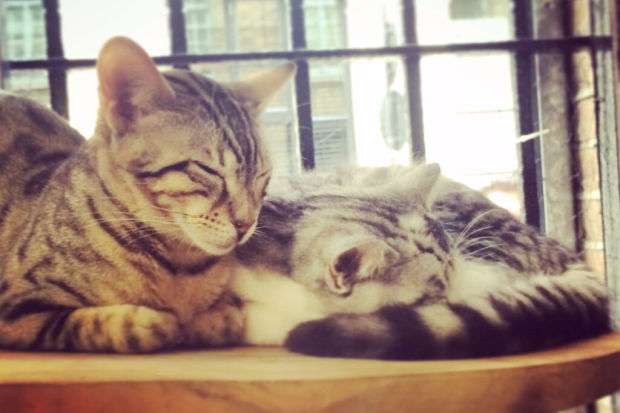London's Cat Cafés
- Caitlin Jordan
- Apr 6, 2017
- 2 min read
Updated: Dec 21, 2019

Cat cafés are great. Nothing else spells an image of relaxation like a warming cup of tea in your hands and a cosy feline curled beside you. Then you remember that you’re surrounded by a dozen or so cats, in a room where cat hair is abundant and every step is taken with the same precaution as walking across a minefield. There’s a cat above you on that shelf, one hiding inside the tube and let’s not forget the furry friend who’s lurking beneath the shadows of that ominously placed rug.
You may question how you found yourself here, but for any moggy enthusiast nothing beats the novelty of feeling like an old cat lady (or man) for an hour.
Cats relaxing in London Cat Village | Source: Feeding Fen
Cat cafés originated in Taiwan in 1998, but in the last decade Japan has taken the idea to a new level, being the home to over 150 establishments. With National Pet Day fast approaching on the 11th April, just how far will people go for some fluffy companionship?
Currently the UK has five cafés scattered across the country: Kitty Café (Nottingham), Mog on the Tyne (Newcastle), Maison de Moggy (Glasgow) and two in London, Lady Dinah’s Cat Emporium and London Cat Village.
However, issues of cleanliness have popped up and Crescent Franklin, 22, and a frequent visitor to Lady Dinah’s says, “Whenever I've told my family they're like ‘isn't that unhygienic?’”
Student Eloise Peck, 19, says, “I just find it a bit weird. I don’t really want animals around while I’m trying to eat”.
With two cat cafés in London a gap in the market needs to be considered too. Ellen Engelfield, 30, and a self-proclaimed “cat enthusiast” says “it would have to have something unique about it or be in a different area because both are in east London, so there is potential.”
Cats at Hapineko Cat Cafe in Shibuya, Tokyo
Source: Flickr, sk
Ellen defined some of the major differences between the café she visited in Japan to our local counterparts. The main difference was that people could feed the animals, allowing for more interaction. It’s also not uncommon for cafés to occupy a large space, with many containing three storeys - so more room for more cats.
In a way, Japan is similar to London. Crowded streets and towering buildings can mean a lack of space both indoors and outdoors. Whether or not these feline dedicated cafés will become a mainstream occurrence over the years, it’s undeniable that they will offer havens for cat fans to interact with their favourite tabbies and not have any sort of responsibilities attached to it.









Comments